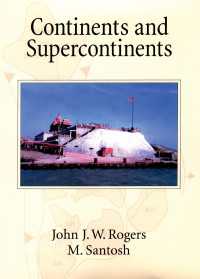Description
Digital data, graph theory and spatial modeling allow us to apply the concepts of centralities and hierarchies to a wide variety of spatial situations.
The authors of this book offer insight into centralities and hierarchies within networks and territories at different scales and temporalities and for different socio-spatial phenomena. The first part of the book explores the contribution of data from cell phones and social networks to understanding the centralities and hierarchies of urban space within a circumscribed temporality. The second part uses network analysis – ecological networks, media networks and scientific knowledge networks – to propose indicators of spatial organization that reveal the centralities and hierarchies of spatial systems. Finally, in the third part, the territorial processes behind the formation of centralities and hierarchies are presented from a long-term perspective.
Table of Contents
Introduction xi
Julie FEN-CHONG
Part 1 Spatial Practices as Indicators of Centralities and Hierarchies 1
Chapter 1 Urban Hierarchies and Centralities Through the Prism of Tweets and Telephone Calls 3
Julie FEN-CHONG
1.1 Introduction 3
1.2 Tweets and mobile telephony: new sources of data to describe the organization of urban space 4
1.2.1 The generalization of geolocated data 4
1.2.2 Imperfect or incomplete geographic locations 6
1.2.3 Validity of tweet and telephone call data 11
1.3 Using tweet and mobile-telephone data to describe the organization of urban space 13
1.3.1 Daytime densities 13
1.3.2 Centralities 16
1.3.3 Intra- and inter-urban hierarchies 20
1.4 Conclusion 22
1.5 References 23
Chapter 2 Measuring Ephemeral Centralities in Territories and Networks 29
Françoise LUCCHINI
2.1 Introduction 29
2.2 The challenges opened up by geolocated personal data 31
2.3 The methodological issue of spatiotemporal divisions 37
2.4 Establishing the variability of mobilities and concentrations: complementarity of surface and reticular spatiotemporal approaches 39
2.5 Integrating the evolutions in post-GDPR geolocated data formats 45
2.6 Conclusion 48
2.7 References 49
Part 2 Networks as Creators of Centralities and Hierarchies 53
Chapter 3 Structures of Today’s World: Geographical Imaginaries of the Press 55
Robin LAMARCHE PERRIN, Romain LECONTE and Étienne TOUREILLE
3.1 Introduction 55
3.2 Centers and peripheries of media coverage of the world 56
3.2.1 Information flow 56
3.2.2 Territorial representation 61
3.3 Methodology for analyzing geopolitical centralities and hierarchies in the French press 65
3.3.1 Data 65
3.3.2 Centralities and hierarchies studied 68
3.4 The media presence of the countries of the world in the French press 70
3.4.1 Indicators to measure a country’s media presence 70
3.4.2 A world unevenly represented in the French press 72
3.5 The media representation of the world in the French press: network centralities and hierarchies 79
3.5.1 Indicators to measure the media co-presence of a pair of countries 79
3.5.2 Centers and regions of media representation of the world 81
3.5.3 Measurement indicators of countries’ media dependence 84
3.5.4 Hierarchical structure of the media representation of the world 85
3.5.5 Media independence, dynamic in the co-presence network 89
3.6 Conclusion: a hierarchical and polycentric world 92
3.7 Acknowledgments 94
3.8 References 94
Chapter 4 Geography of Research Activities and Urban Hierarchies 97
Marion MAISONOBE
4.1 Introduction 97
4.2 The spatial logics of research activity distribution 98
4.2.1 Research: a metropolitan activity? 98
4.2.2 Research institutions: manifold spatialization logics 101
4.2.3 Innovation capacities and population density 105
4.3 The spatial distribution of research activities in France and the United Kingdom 108
4.3.1 Case studies, data and methods 108
4.3.2 Urban and scientific hierarchies in France and the United Kingdom: an analysis of disciplinary differences 110
4.4 Conclusion 115
4.5 References 117
Chapter 5 Hierarchy and Centrality in Ecological Networks 123
Yohan SAHRAOUI, Céline CLAUZEL and Jean-Christophe FOLTÊTE
5.1 Introduction 123
5.2 Ecological networks in landscape ecology 124
5.2.1 The heterogeneity of landscape structures 124
5.2.2 Scales and hierarchy of ecological processes 124
5.2.3 Movements of individuals and landscape connectivity 125
5.2.4 Spatial and temporal scales of ecological networks 126
5.2.5 Landscape fragmentation 128
5.3 Spatial properties of ecological networks: centrality and hierarchy 128
5.3.1 Modeling ecological networks 128
5.3.2 Hierarchy in ecological networks 131
5.3.3 Measuring centrality 134
5.4 Applications in land use planning and biodiversity conservation 136
5.5 Conclusion 138
5.6 References 139
Part 3 Hierarchies and Centralities in Territorial Systems 143
Chapter 6 Hierarchy and Centralities in Facilities and Services 145
Mohamed HILAL and Virginie PIGUET
6.1 Introduction 145
6.2 Centralities: what are we talking about? 146
6.2.1 The concept of centrality in geography and urban economics 146
6.2.2 Administrative, political or historical centrality 147
6.2.3 Some common operational definitions 149
6.3 Data and methods for measuring centralities 152
6.3.1 Presence of facilities and services 152
6.3.2 Choice of the municipality as the reference spatial unit 153
6.3.3 Mixed automatic classification 154
6.3.4 Delimitation of service areas 155
6.4 France’s 10,774 centers of facilities and services 156
6.4.1 Four levels of hierarchical centers 158
6.4.2 Levels of facility centers 159
6.4.3 Link between center levels, population and jobs 161
6.5 Service and facility centers in their territorial context 162
6.5.1 Overlapping service areas 162
6.5.2 Centers at the core of city attraction areas and intercommunalities 165
6.5.3 Center vulnerabilities 169
6.6 Conclusion: what lessons for public action? 172
6.7 References 173
Chapter 7 Processes that Create Centralities and Hierarchies in Human Geography 177
Cécile TANNIER
7.1 Three principles and five laws underlying the concentrations and dispersions observed in human heography 178
7.2 Integration of the spatial container and social content of places, and strong emergence between individual behaviors and collective references 182
7.3 Centralities and hierarchies in settlement systems 190
7.3.1 A multi-scale framework for analyzing the variables determining the concentration and dispersion of human settlements within a settlement system 191
7.3.2 Processes behind the evolution of centralities and hierarchy in settlement systems 198
7.4 Conclusion 210
7.5 References 211
Chapter 8 Hierarchies and Processes of Co-evolution in Urban Systems 217
Juste RAIMBAULT
8.1 Introduction 217
8.1.1 Complexity and hierarchy 217
8.1.2 Territorial systems and hierarchy 219
8.1.3 Co-evolution and hierarchy 220
8.1.4 Proposed approach 220
8.2 Co-evolution model 221
8.2.1 Context 221
8.2.2 Model description 222
8.2.3 Implementation of the model 224
8.2.4 Quantification of the hierarchy of urban systems 224
8.3 Simulation results 225
8.3.1 Hierarchy patterns 225
8.3.2 Hierarchy regimes 232
8.4 Discussion 236
8.5 Conclusion 237
8.6 Acknowledgments 238
8.7 References 238
List of Authors 243
Index 245








